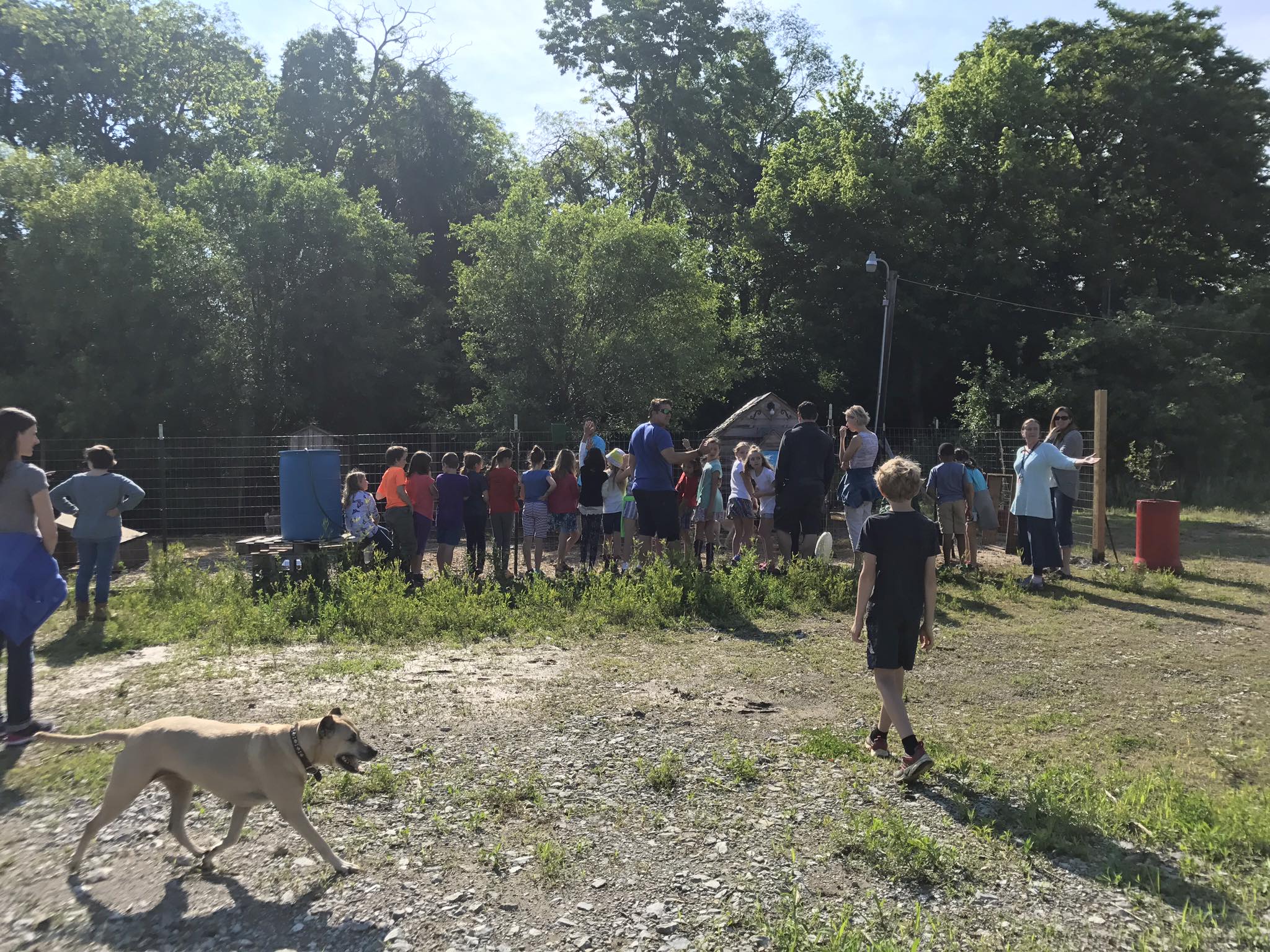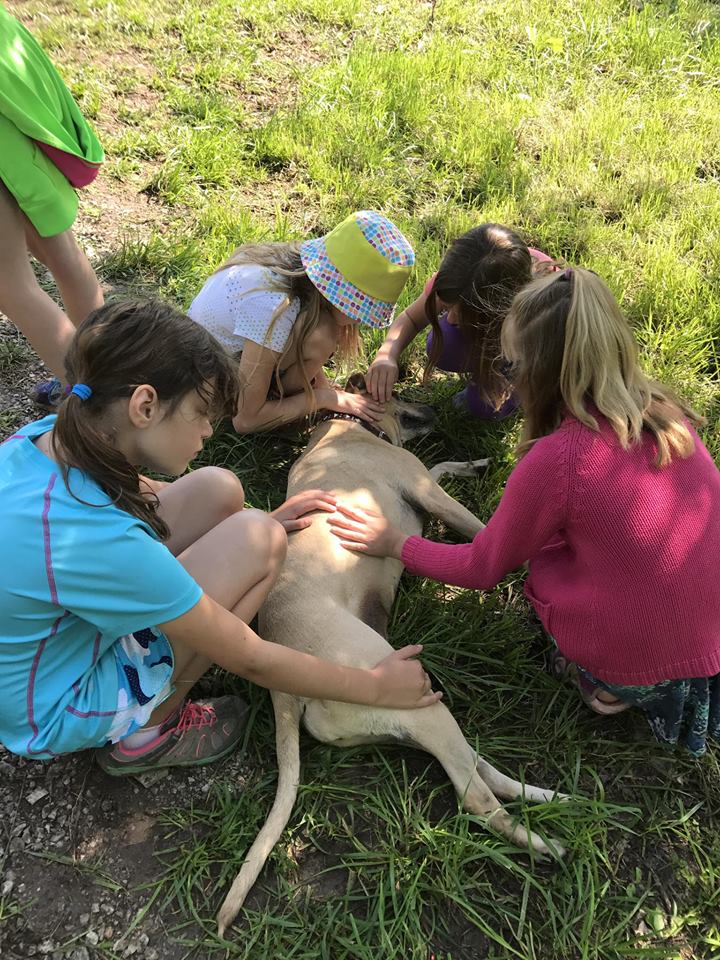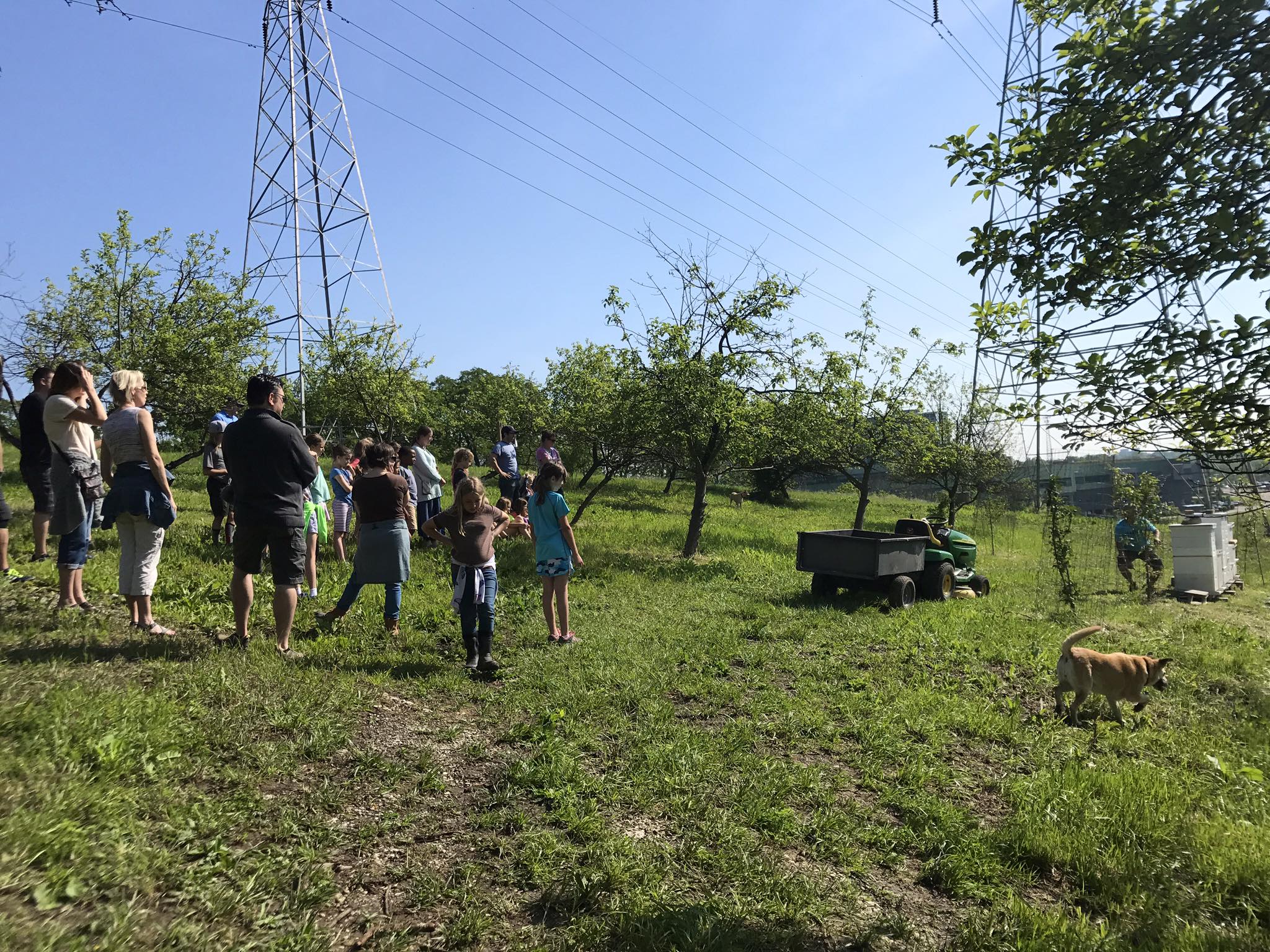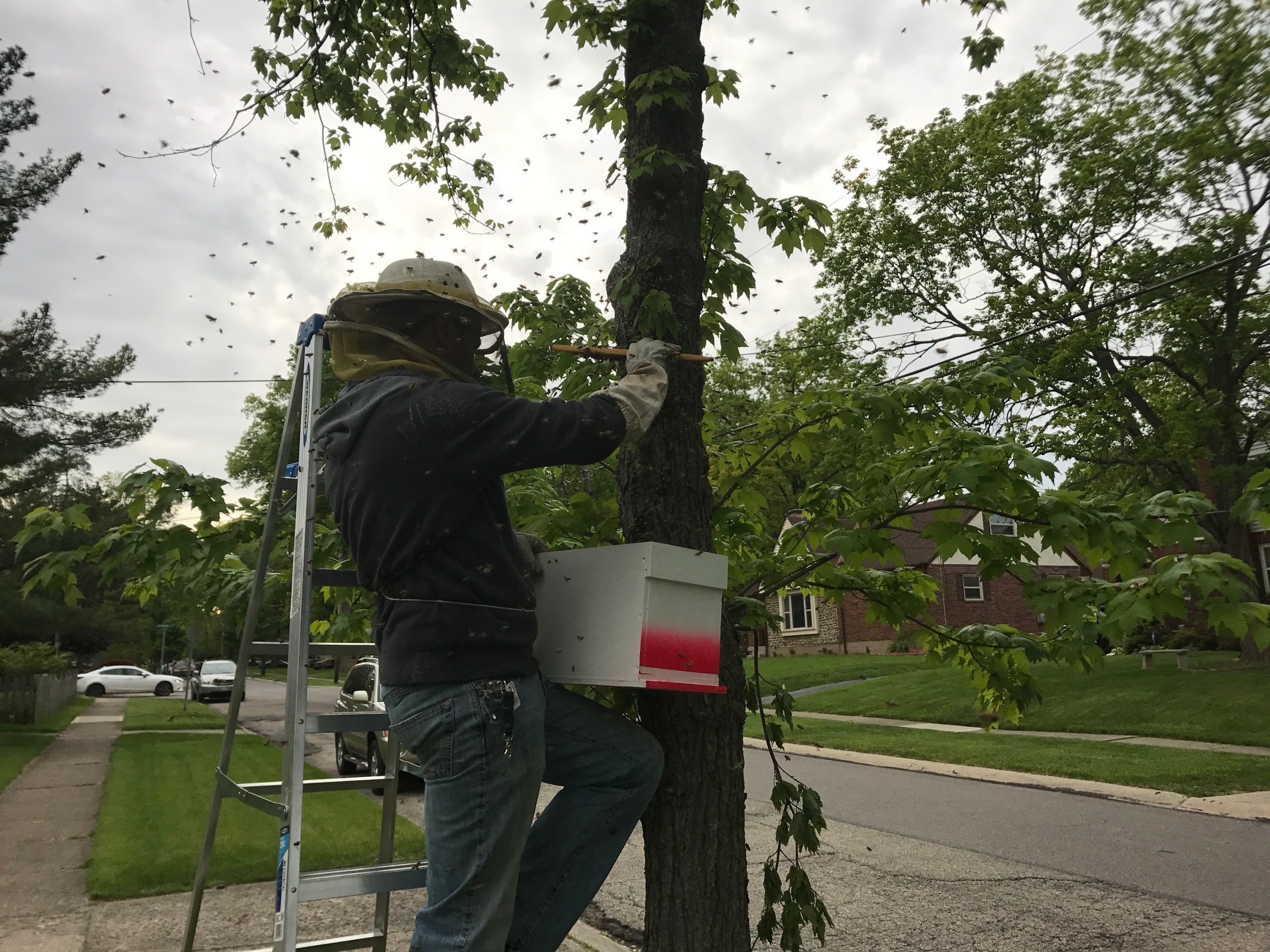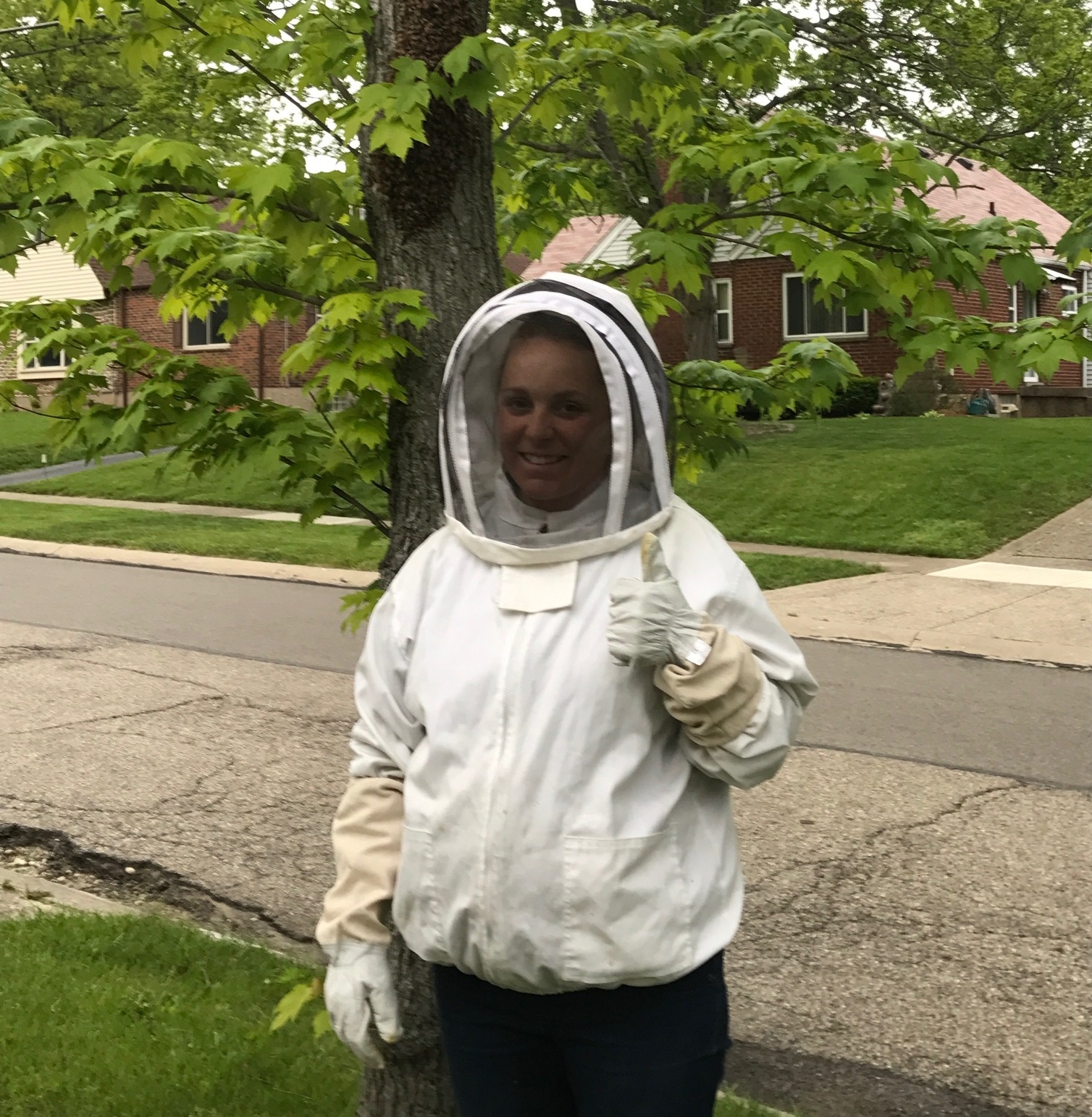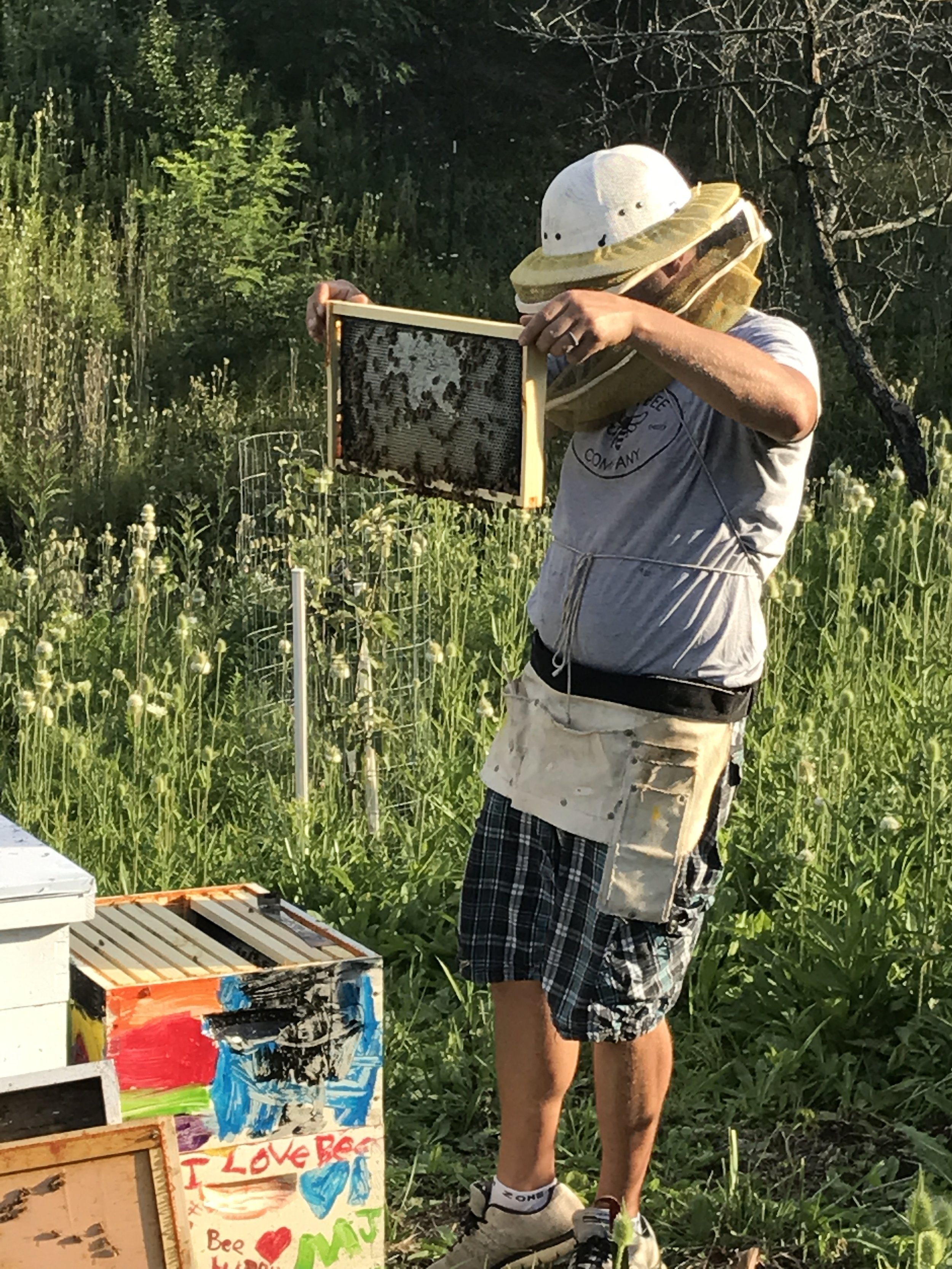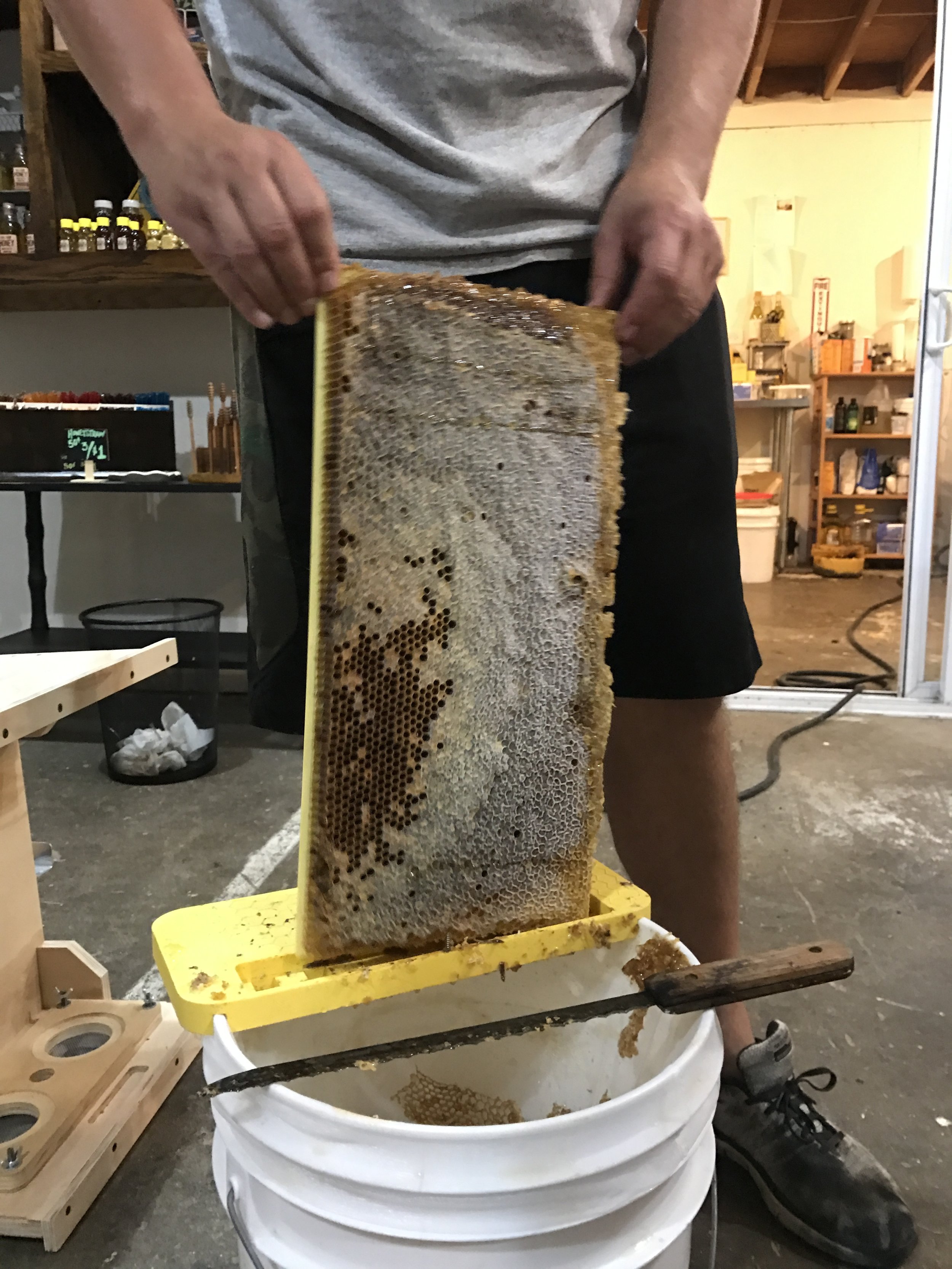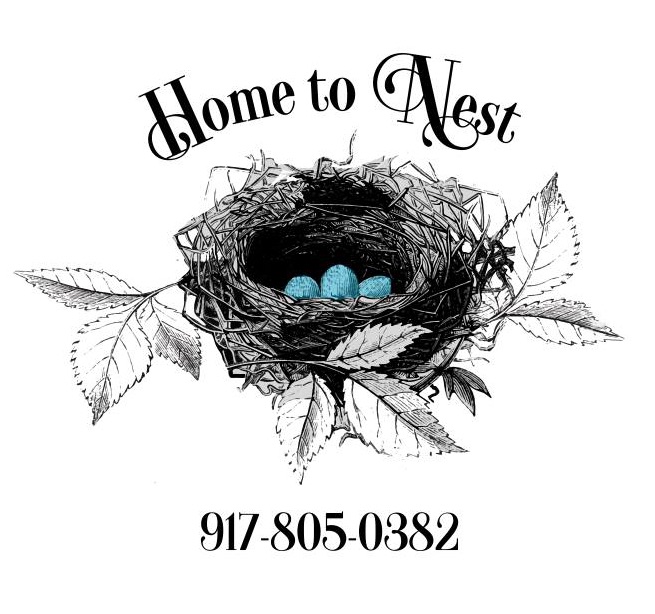Thank you to the staff, parents and students at Cincinnati Waldorf School for not only coming out and spending the day on the farm to learn all about honeybees, chickens and goats; but for helping us save the bees by hosting a hive in Gaiser Bee Co. apiary for the 2017 season.
It was a pleasure having everyone out and the kids were wonderful. We hope to see you guys again soon!
The Cincinnati Waldorf Hive
New honeybee colonies can start from a number of sources. For the Cincinnati Waldorf Hive, these girls started from what is called a swarm. These honeybees were rescued from a tree in North College Hill on May 8th. We got a late call from a resident in the area who was concerned they would be sprayed and harmed by someone if we didn't get them. Right away we headed over and suited up.
The tree was right off the street and the bees were about 12-15 ft up.
Cory checked out the hive to see if he was able to spot the queen right away but no luck. So we geared up and got the tools ready to gently brush the bees into a swarm box.
The bees did great. We were able to get almost all of them into the swarm box without anyone getting stung! This is a strong indicator that we were able to get the queen in the box. The worker bees and drones will follow the queens scent, so by getting her into the box, you are able to lure in the rest. Sometimes her scent can be left behind on the tree or wherever they landed, so you may have some stragglers.
Once we got the hive back to our apiary we removed the tissue we had closing off the entrance for transporting purposes. Now that they are in a new place they will come out and explore their surroundings.
Opening up the swarm to transfer them into their new home.
INSPECTION DAY June 6th
After the school visited, we waited a while before checking the hive. Glad we did too, because they were some busy bees in there building up wax, storing pollen and even nectar. They seem to love their new home.
Cory began transferring the frames one at a time into the beautiful new home hand painted by the students at Waldorf school. With each frame he made sure to check for a queen. It is always a good idea to try and find your queen during inspections so that you can set her aside and be sure not to hurt her. In the case of a swarm, you want to try to find her to see if she is marked and to inspect her condition.
Can you see the queen?? She's beautiful and she's marked!! This is such a perfect example of why marking the queen is a good thing. Whoever's hive this was had marked her last year with the color white, which indicates to us that she is going on her second year.
After we spotted this beautiful caramel colored queen and transferred over all the frames into their new hive, we closed it up. They are doing so well, we did not want to continue to disrupt them. We know she is healthy and laying good eggs and they have a flourishing population.
Our next inspection will be soon and we will most likely add on another box so their population can continue to grow. The Waldorf Hive looks great!
inspection day july 30, 2017
On July 30th, we did another inspection on the beautiful Waldorf School Hive, and the bees seemed to be doing fantastic. They were very calm and docile as we were handling the boxes, which is more than ideal.
This colony of honeybees is thriving and quickly growing in numbers. When we opened up the boxes, we noticed they had tons of stored and capped honey in their frames. The population is doing so well and expanding so quickly that they even started making queen cups– we noticed so many of them it was hard to count!
We couldn't seem to find the queen but we do know she is in there because there's an abundance of eggs and the bees were crafting their queen cups, which means they could potentially swarm. The queen cups are a signal to beekeepers to add a new box so there's enough room for the growing population.
This colony may have already swarmed because they seemed to be slightly lower in numbers but they are healthy and still laying eggs/hatching baby bees so now they are in the process of regrowth!
inspection day august 5, 2017
We went out to the apiary for another inspection on August 5th and decided to treat all of the hives for precautionary reasons.
We're getting to that tricky time of summer when it's much too common to find the hives being infiltrated by mites and other unwanted species. We saw these bees had fallen victim so we ended up having to treat them for Parasitic Mite Syndrome(PMS).
Reports from the Ohio Department of Agriculture are indicating that the varroa mite population this season appears to be excessively high. Varroa mites are minuscule in size but they latch on like ticks and drain the life from the victim. We wanted to see if this was true with our hives so we did a thorough inspection on 10 of the hives in our apiary. Of those 10 hives, 6 had obvious signs of heavy mite infestation. Including but not limited to:
- bees with deformed wing virus
- poor honey storage
- spotty brood pattern
- larva that appears melted in their cells.
But, not to worry! Just because your hive has mites, doesn't mean it's the end of the world– or their world, really. We have started treatment (these ladies are on their second round of treatment) and will be treating every hive in the apiary every five days for the next twenty days to ensure that the brood, currently in the larvae stage, gets fully treated before they hatch so they are able to mature without being infected by the mites. We believe these ladies will pick themselves back up and become a healthy, thriving colony once again in no time!
TREATMENTS
Because of the high number of Varroa mites throughout the entire state of Ohio, we spent the month of August treating all hives. We did an organic treatment of oxalic acid in 3 treatments, 5-7 days apart in order to treat all capped brood as they hatched.
We will be sure to keep you updated on our next visit out to the apiary. Be sure to follow this blog for updates and feel free to post any comments, questions or concerns.
Stay tuned!
fall extraction season: late summer - fall
Inspection Day September 9, 2017
After treating all of the hives and monitoring the bees behavior throughout the month, we opened their homes back up on September 9th to see how everyone was doing. We specifically went in to check on the status of the Varroa Mite treatment and to see where their food supply is at.
The treatment looks like it worked tremendously and everyone seems to be happy and healthy! Therefore, we proceeded with checking the food supply and decided to add in some Easter marshmallow candies on the inner cover until we start the feeding for fall.
Feeding during fall is necessary after extraction season so that the bees can continue building up their food supply for the winter months, before the cold gets here.
october 3, 2017 inspection day + final extraction!
On October third, we went to the apiary to gather the frames for our final extraction of the year– the beloved fall honey!
Fall honey is dark in color, plus rich and bold in flavor. It is a bit thicker and more of a dark amber color compared to spring honey. While darker honey is more flavorful and intense than light, it also contains more nutrients; including vitamins, minerals, and antioxidants.
We didn't pull many frames from the newer colonies this year so the honey you will be receiving will be coming from some of the stronger, more established hives– so yours can continue to thrive.
The final step, in the first week of November, will be to go through and consolidate some of the colonies and insulate them.
CLICK HERE to see a video of how we will be preparing the hives for winter






